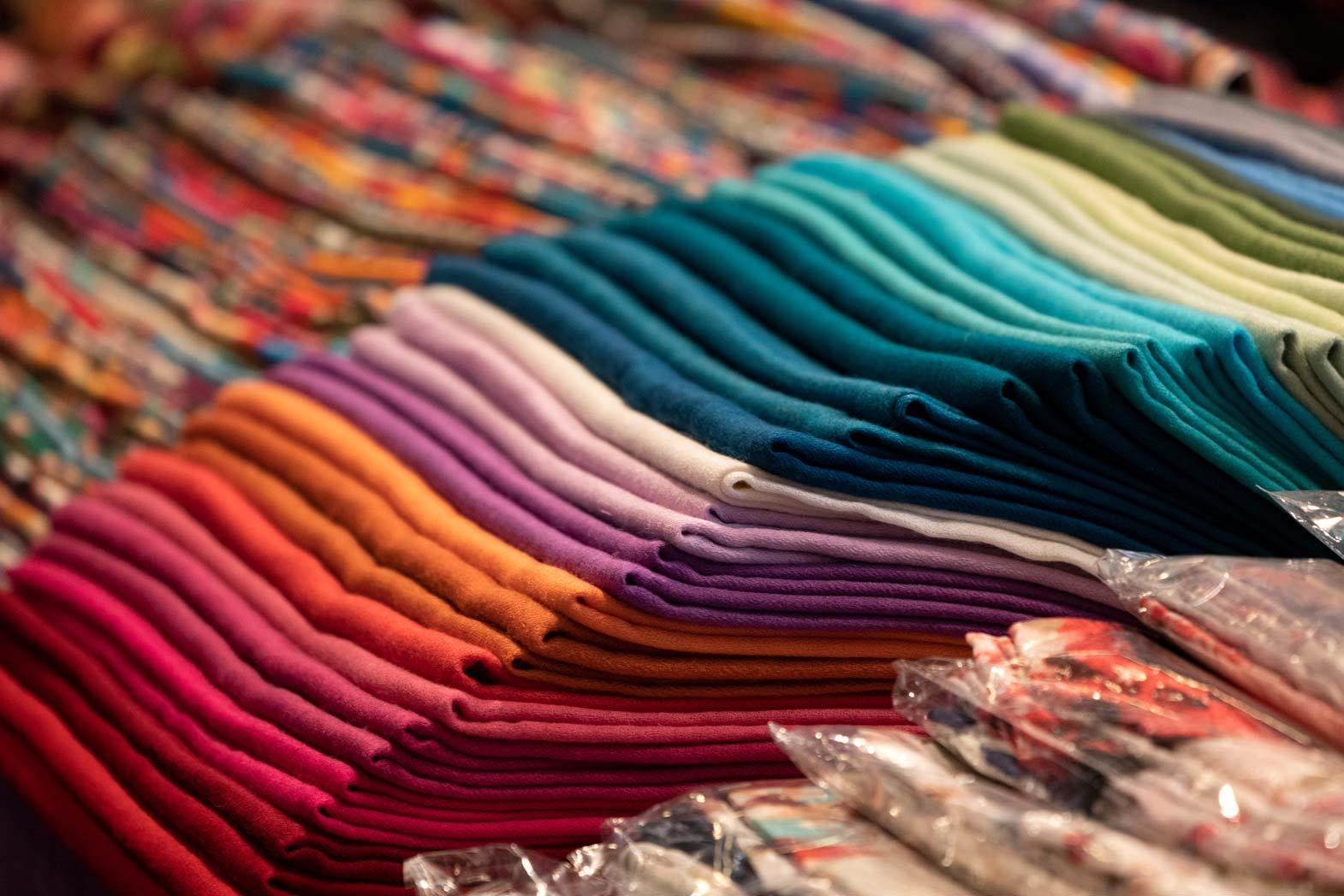Plasma is a gas with equal densities of positively and negatively charged ions. One peculiar feature of plasma that makes it a versatile alternative is that it can exist in an extremely vast range of temperature and pressure. With different kinds of treatments, plasma can provide unique surface properties to textiles. Plasma treatment offers a myriad of textile finishes like improved dyeability, printability, color fastness, adhesiveness, and hydrophobic qualities.
The gaseous state of plasma consists of many excited substances like ions, free electrons, ultraviolet, and infrared radiations. It can be generated by thermal, electrical, mechanical, nuclear, and radiant forms of energy. Based on the particle density, temperature, pressure, presence, or absence of electromagnetic fields, the state of the plasma can be distinguished.
Non-thermal plasmas or cold plasmas are widely used in different textile applications. Textile treatments using cold plasma are either done by vacuum pressure or by atmospheric pressure. Plasmas are the most uniquely effective surface treatment tools. The following properties make plasma so unique:
• Plasma is used at low temperatures and hence reduces the possibility of damages to the fabric.
• The ability to use plasma at wide thermal, physical, and chemical ranges allows precise tailoring of surface treatments in fabrics.
• The dry treatment processes of plasma make it an environmentally friendly alternative.
The effect of plasma treatments on fibers and polymers leads to chemical changes, structural changes, and physical changes in the surface layers of fabrics. There are four major effects that are usually observed. One of the effects is always present to some degree, but one may favor the other based on the substrate and the gas chemistry. The following are the four broad surface effects that can be done with plasma in textiles:
Plasma cleaning and etching: It is the removal of impurities or substrate material from the surface of the textile fabrics. Plasma cleaning improves the quality of printing, painting, dyeing, and results in increased adherence of a fabric.
Plasma assisted grafting: Free radicals are generated in these treatments inducing a secondary reaction like cross-linking. A monomer (which is normally a liquid or gaseous precursor) undergoes a conventional polymerization on the previously activated surface.
Plasma polymerization: The polymerization in such treatments occurs in the plasma itself by introducing the monomer in the plasma directly.
Since plasma surface treatments make modifications only to the top most layers of fabric leaving the rest of the bulk properties of the material untouched, it becomes ideal substance to use in lieu of traditional treatment methods.
There are numerous applications of plasma technology in textiles for creating interesting properties and functional surfaces. The following are a few uses of the plasma gas:
Mechanical properties: To enhance or increase surface softness of cotton and other cellulose based polymer fabrics using oxygen plasma process; reducing felting in wool, creating crease resistant wool, cotton, and silk fabrics are some applications of plasma to improve mechanical properties of fabrics.
Electrical properties: Plasma technology can be used to create anti-static surfaces for rayon fabrics. This is done with the use of chloromethyl dimethylsilane.
Wetting: Plasma processes help improving surface wetting in synthetic polymers through hydrophilic treatment, which also serves as dirt repellent and anti-static finishes. Siloxan and perfluorocarbon plasma treatments provide hydrophobic finishes for cotton and polyethylene fabrics.
Dyeing & Printing: Plasma treatment with oxygen improves the capillarity of cotton and wool garments. Argon plasma treatments can provide dyeing depths to polyamide materials.
Other novel properties: With different plasma treatments UV protected finishes, bleaching of wool, and flame retardant surfaces can be obtained.
Application in Biology and Medicine: Diverse plasma treatments are used to get fabric finishes that favours over growth of cells for the purpose of culture tests, fermentation, and in implants. Plasma technology is also used for fabrics not favouring over growth of cells for catherters and fermenting, for enzyme immobilization, and for sterilization.
Textile application in membrane and environmental technology: Gas separation for oxygen enrichment, solution diffusion membranes for alcohol enrichment, functionalized membranes for affinity, charged, bipolar treatments can be achieved with plasma technology.
Hence plasma provides the classical finishes and much more. Qualities like being applicable to all substrate materials and incorporating different types of surface properties in textiles without affecting the basic bulk properties makes it the perfect alternative to traditional methods. Polymers which are generally difficult to modify, can be changed with the help of plasma technology. Moreover, the plasma processes are dry, use very few chemicals, and are performed in closed systems. This makes the process environment friendly and highly safe.
Though the initial investments in equipments and tools might be high for using plasma technology, but the very fact that the process is easy on the environment adds high value to products and reaps higher profits. Plasma technology has immense potential and newer opportunities for the textile finishing industry to explore.
References:
1. Igb.fraunhofer.de
2. Arxiv.org








Comments